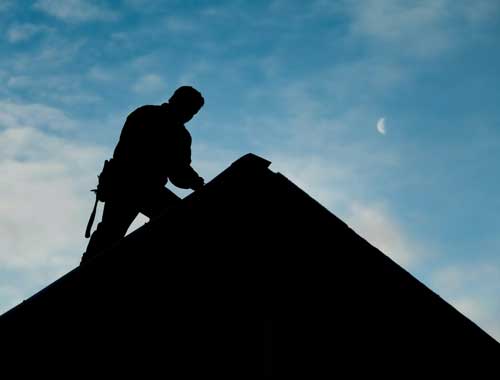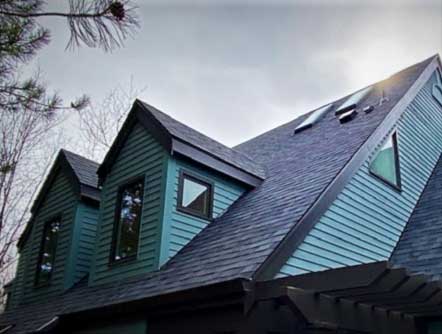Introduction
Maintaining a home involves numerous responsibilities, and one of the most critical aspects is ensuring your roof remains in good condition. Your roof is your first line of defense against the elements, shielding you from rain, snow, wind, and sun. However, roofs have a finite lifespan, and knowing when it’s time for a replacement can save you from more significant headaches down the road. In this comprehensive guide, we will delve deep into the signs that indicate it's time for a new roof and what steps to take next.
Roof Replacement Guide: Signs It's Time for a New Roof
Understanding the Importance of Your Roof
Your roof isn't just an aesthetic feature; it's essential for protecting your home’s structural integrity. A well-maintained roof can last anywhere from 20 to 50 years depending on the materials used, climate conditions, and maintenance practices.
Why Regular Inspections Matter
Regular inspections can catch problems before they escalate. By keeping an eye on your roof's condition, you can extend its life and avoid costly repairs or replacements.
Common Roofing Materials and Their Lifespan
Different roofing materials come with varying lifespans:
- Asphalt Shingles: 15-30 years Wood Shakes: 20-40 years Metal Roofing: 40-70 years Clay Tiles: 50+ years Slate: 75+ years
Understanding which material your roof is made from can help you gauge its potential longevity.
Signs It’s Time for a New Roof
1. Age of Your Roof
One of the primary indicators that it may be time for a replacement is the age of your roof. If your roof is nearing its expected lifespan based on the material used, consider getting an inspection to evaluate its current condition.
2. Missing or Damaged Shingles
Missing shingles are often easy to spot after a storm or high winds. If you notice more than just a few shingles missing or damaged beyond repair, it could be time to replace the entire roof.
3. Curling or Buckling Shingles
Shingles should lie flat against your roof. If they start to curl or buckle, this could indicate that they’re reaching their end of life or that there are underlying issues with your roofing structure.
4. Granules in Gutters
When cleaning out gutters, finding granules – small pieces of shingle material – can signal that your shingles are deteriorating. This wear can lead to leaks if not addressed promptly.

5. Water Damage Inside Your Home
If you notice water stains on ceilings or walls inside your home, it’s critical to investigate further. These stains often signal leaks in your roofing system.
Assessing Roof Damage: DIY vs Professional Help
While some homeowners might feel confident assessing minor damage themselves, hiring professionals ensures every aspect is thoroughly checked.
Professional Inspection Benefits
- Comprehensive analysis by trained experts. Identification of hidden issues. Recommendations for repairs versus replacement.
How Weather Impacts Your Roof’s Longevity
1. Sun Exposure and UV Rays
Over time, prolonged exposure to sunlight can degrade roofing materials.
Roofing contractor2. Rainfall and Moisture
Excessive moisture leads to mold growth and deterioration of roofing components.
3. Snow and Ice
Heavy snow can weigh down roofs while ice damming creates pools of water that seep under shingles.
4. Wind Damage
High winds can lift shingles off their base or cause debris to impact them directly.
Cost Considerations for Roofing Replacement
Replacing a roof isn't just about recognizing when it's time; it also involves understanding the financial implications.
Factors Influencing Cost
Size of the Roof Material Selection Labor Costs in Your Area Removal of Old Material Additional Repairs NeededBudgeting Tips for Homeowners
- Get multiple quotes. Assess financing options. Plan ahead during off-seasons when prices may be lower.
FAQs about Roof Replacement
1. How do I know if my roof needs replacing?
Look out for signs such as missing shingles, water stains inside your house, or if it's approaching its lifespan based on material type.
2. Can I replace my roof myself?
While some homeowners Service establishment may attempt DIY replacements, it’s often best left to professionals due to safety risks and complexity involved in proper installation.
3. How long does a typical roof replacement take?
Most residential roofs take between one to three days to replace depending on size and complexity but planning may vary based on weather conditions as well.
4. Is roofing replacement covered by insurance?
Many homeowners’ insurance policies cover damage due to certain factors like storms; always check with your provider regarding specific coverage details related to wear-and-tear versus sudden damage events.
5. What happens if I ignore signs that my roof needs replacing?
Ignoring these signs can lead not only to increased repair costs but potentially serious structural issues as well due to ongoing moisture infiltration causing rot or mold growth inside walls/ceilings!
6: Are there any warranties available after replacement?
Yes! Most reputable contractors provide warranties ranging from labor guarantees (often around 5–10 years) up through manufacturer warranties based on material types used (typically covering defects between 20–50+ years).
Conclusion
Recognizing when it's time for a new roof is crucial in preserving both the safety and value of your home. The signs discussed throughout this guide—ranging from age-related concerns to visible damage—serve as vital indicators to take action before minor issues escalate into major expenditures or hazards.

Whether you're considering DIY repairs or hiring professionals for an assessment and potential replacement project ahead; being informed will ultimately lead you toward making wise choices regarding one of life's most significant investments—your home!
By staying vigilant about maintaining this key component of shelter overhead—the benefits are endless: peace-of-mind knowing everything above protects what matters most below!
Remember—a proactive approach today saves costly repairs tomorrow!